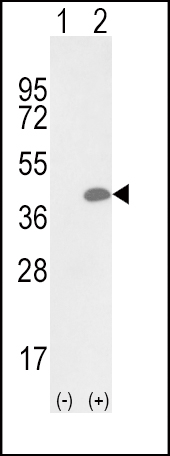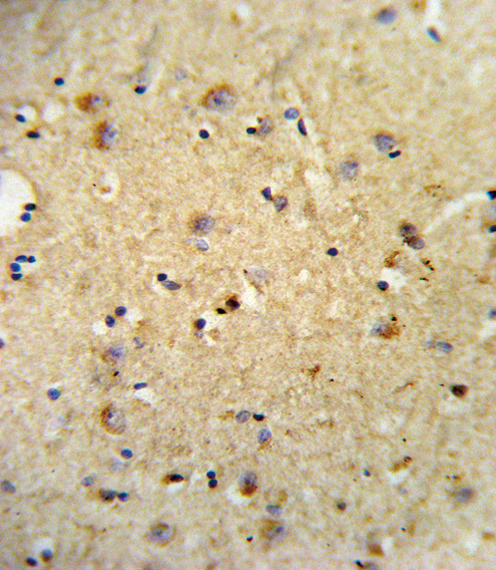产品名称
OLR1 Rabbit Polyclonal Antibody (Center)
别名
Oxidized low-density lipoprotein receptor 1, Ox-LDL receptor 1, C-type lectin domain family 8 member A, Lectin-like oxidized LDL receptor 1, LOX-1, Lectin-like oxLDL receptor 1, hLOX-1, Lectin-type oxidized LDL receptor 1, Oxidized low-density lipoprotein receptor 1, soluble form, OLR1, CLEC8A, LOX1
存储缓冲液
Purified polyclonal antibody supplied in PBS with 0.09% (W/V) New type preservative N. This antibody is purified through a protein A column, followed by peptide affinity purification.
Human Gene ID
NP_001166103.1;NP_001166104.1;NP_002534.1
Human Swissprot No.
P78380
特异性
This OLR1 antibody is generated from rabbits immunized with a KLH conjugated synthetic peptide between 64-92 amino acids from the Central region of human OLR1.
稀释度
WB~~1:1000;IHC-P~~1:100~500
运输及保存条件
Maintain refrigerated at 2-8°C for up to 2 weeks. For long term storage store at -20°C in small aliquots to prevent freeze-thaw cycles.
背景介绍
OLR1 is a low density lipoprotein receptor that belongs to the C-type lectin superfamily. This protein binds, internalizes and degrades oxidized low-density lipoprotein. This protein may be involved in the regulation of Fas-induced apoptosis. This protein may play a role as a scavenger receptor.
组织表达
Expressed at high level in endothelial cells and vascular-rich organs such as placenta, lung, liver and brain, aortic intima, bone marrow, spinal cord and substantia nigra. Also expressed at the surface of dendritic cells. Widely expressed at intermediate and low level.
细胞定位
Cell membrane; Lipid-anchor. Cell membrane; Single-pass type II membrane protein. Membrane raft. Secreted. Note=A secreted form also exists. Localization to membrane rafts requires palmitoylation
功能
Receptor that mediates the recognition, internalization and degradation of oxidatively modified low density lipoprotein (oxLDL) by vascular endothelial cells. OxLDL is a marker of atherosclerosis that induces vascular endothelial cell activation and dysfunction, resulting in pro-inflammatory responses, pro-oxidative conditions and apoptosis. Its association with oxLDL induces the activation of NF-kappa-B through an increased production of intracellular reactive oxygen and a variety of pro-atherogenic cellular responses including a reduction of nitric oxide (NO) release, monocyte adhesion and apoptosis. In addition to binding oxLDL, it acts as a receptor for the HSP70 protein involved in antigen cross-presentation to naive T-cells in dendritic cells, thereby participating in cell-mediated antigen cross-presentation. Also involved in inflammatory process, by acting as a leukocyte-adhesion molecule at the vascular interface in endotoxin-induced inflammation. Also acts as a receptor for advanced glycation end (AGE) products, activated platelets, monocytes, apoptotic cells and both Gram-negative and Gram-positive bacteria.



